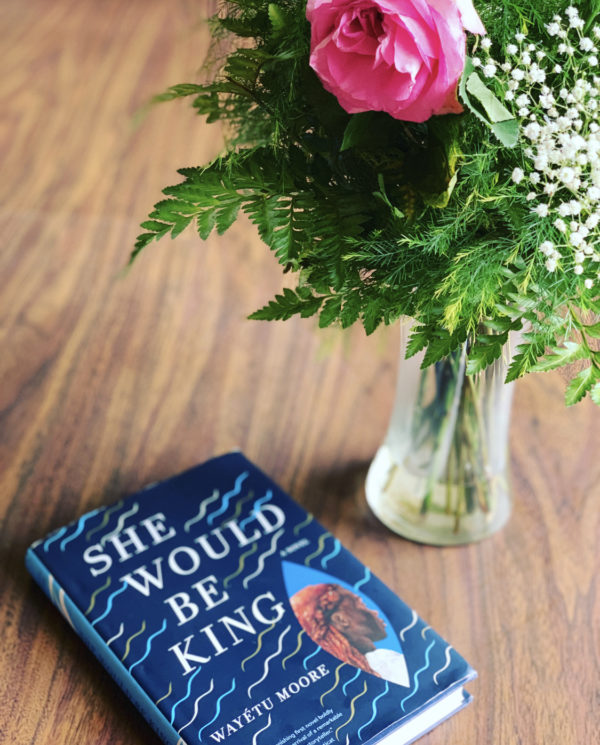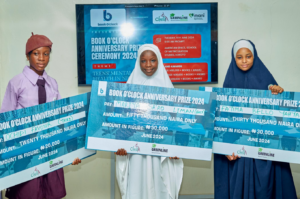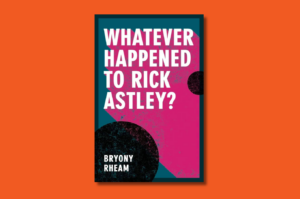
1
She Would Be King by Wayetu Moore takes me back to one of the most tragic characters in African literature. Unoka the father of Okonkwo.
Unoka always had trouble fitting in. As a child, he roams village roads, singing to birds instead of learning to farm yams. He grows up to become the least understood man in Umuofia. In his old age, he is forcibly removed from his home and deposited in an ancient forest where he is left to die and rot, unburied.
In Things Fall Apart, being a misfit is not a lifestyle choice. It is a matter of life and death. And, since life can only ever be life within the community, those who are cast out by the collective will are doomed.
Wayetu Moore’s debut novel brings back this motif of the tragic outcast in African storytelling. But she does something different with it.
The novel is set in an early 19th century West African town called Lai. It tells the story of Gbessa, a dark-skinned girl with hair “a long and fiery red bush.” Gbessa has always been an outsider. Apart from the fact that she is, literally, born outside, in a bush behind the family home, her birthday coincides with a day set aside by the elders as evil. Cursed and branded a witch, Gbessa is forced into seclusion for most of her childhood. At the age of 13, she is banished to the forest to die. But something unexpected happens.
2
Wole Soyinka says that Yoruba tragedy involves figures exiled from the worlds of the living, the ancestors and the unborn. Tragedy takes the form, in these stories, of losing those things that protect life and body from desolation – family, community, friendships, sustenance. The tragic moment has the hero standing all by herself, stripped of the shell of collective life.
Think of Chaka running into the plains away from a murderous father. Think of Samba Diallo and the crushing loneliness of being misunderstood by two cultures. Think of the Palmwine Drinkard and his endless wandering in the forest of creatures. Think of Ogun and his passage through the forest of existence.
Gbessa recalls these figures of exclusion haunting African literature. Together, they form the army of the excluded. Some, like Unoka, lose everything, with death as their reward. Others, like Soyinka’s Ogun, discover worlds on the other side of abandonment. Moore’s characters are more like Ogun. Though Gbessa is left in the forest to die, she doesn’t. Each time she dies, she comes right back to life. She has a super power, and it is immortality.
At the heart of She Would Be King is a wild proposition: what if Unoka did not die? What if he figured out a way to survive in the forest and became the starting point of a new nation?
In Moore’s story, Liberia is one such nation, built on the lives of three characters abandoned to their death — Gbessa the witch maiden of Lai, June Dey a slave from Virginia, and Norman a British-Maroon teenager. The survival of these characters connects the dots in the long, sprawling trans-Atlantic history from which Liberia emerges as a West African nation.
Pushing the figure of the outcast to its farthest limit, Moore shows that there can be power in being a pariah. With each character, vulnerability is transformed into a super-power. As a witch-child, Gbessa is fated to die in the forest. But this fate becomes the gift of immortality. Since the body of the slave is one that is constantly being mutilated, it makes sense that June Dey’s power is such that bullets bounce off his skin. Norman is caught between two worlds—the British and the Maroon settlement. Both worlds refuse to recognize him. This invisibility becomes the power to disappear at will.
Not everyone who is left outside for dead actually dies. Some survive. And instead of returning to the community, they make worlds of their own. The novel explores that mythic space in storytelling where tragic experience tips into magic and pushes the body far, far beyond, into something superhuman.
3
Moore’s interest in the outcast extends beyond the human world. It informs the way she treats the animals in her stories.
Animals have inspired some of the most memorable moments in African storytelling. In 17th century Ethiopia, Galawdewos repeatedly relies on the appearance or the death of animals to portray Walatta Petros’ miraculous saintly power. When animals are incorporated in ritual process, the visual effect is powerful. The image of Ozidi pounding seven different kinds of animals into some kind of talismanic pulp is one of the wildest moments in the Ijaw Saga. Animals evoke attributes. Okonkwo is a fish. Amalinze a cat. The Unoka of childhood likes birds and sings to them. Chaka worships the serpent king of the deep pool but kills lions and hyenas without mercy. Animals make cute side-kicks. Zizi December’s sloth in Lauren Beukes’s Zoo City is the coolest animal accessory of all time. But here is the problem. If we went by these examples, it would seem as though animals were useful solely for what they told us about human characters. They either serve a mythical, allegorical, sacred purpose in stories, or they are not there at all, their lives erased and their death unmournable.
In the author’s note, Moore explains that the novel is inspired by two deaths, one of a cat and the other of a woman.
When I was a child, my mother cautioned that I should always be kind to cats. She told me a story that took place in the West African village where my family and I hid during Liberia’s civil war in 1990. She said: “In Lai, there was once an old woman who beat her cat to death. The cat resurrected, and his ghost sat on her roof until her house fell down, killing her.” Several years ago I attempted to write a short story about this woman and her notorious death. I did, and from that death, rather surprisingly, and, thankfully, Gbessa was born.
Her mother’s admonition to be kind to cats clearly stayed with Moore because, in the novel, she leaves enough narrative room for animals to exist freely. Animals crowd the story—every page, every twist and turn, every revelation involves an animal or evokes an animal. Animals are not just narrative prop. When they die, they are mourned. The death of Ol’ Ma Nyanpoo’s cat is memorable for this reason. Moore records every bit of the cat’s tragic end – the beating and the moment of his dying; “he let his eyes close, and his heart stop, and his mouth open.”
4
To conclude, I want to touch on language. The petty intrigues in a Jane Austen drawing room and Ifemelu’s daily observations of life in America are the stuff of light, everyday exchanges. Elizabeth and Ifemelu make sense to the world around them, so does the language needed to tell their stories.
But capturing the tragedy of those who are banished to the outer darkness of the community is a slightly more complicated business. Language would need to be more textured, thick on the tongue, laden with imagery.
Again, I was alone. I waited in the aftermath, dust and blood beneath me, years and years behind me, my friend, my love, beside me. I could not watch him rot any more than he had in the mute and mystical dungeon of my company. I stood up and dusted off my dress, my sticky face and hands. I walked…until I reached the ocean. And the waters turned back. And I went with them, hoping I would reach the other side. I traveled through the ocean’s mountains of liquid salt; passing corpses of the first and last; passing wild and mammoth beasts that followed me in the cold dark, sang to me when the silence of the ocean pushed me into my ears.
“Dust,” “blood,” and “rot;” “mystical dungeon” and “mammoth beast;” “passing corpse” and “the cold dark.” These words and phrases tell us we are no longer in drawing rooms or hair salons. We are in the underworld of time, where those destroyed by the violence of history are left for dead. Telling their stories, which Moore does beautifully, is an exercise in magic. Her writing is weighted with mythic power. It is not quite poetry, but gestures towards something slippery, suggestive, and dark.
*
Publisher | Graywolf
Year | 2018
Buy | Amazon









She Would Be King, Wayétu Moore - Dragonfly: An Exploration of Eco-fiction May 08, 2019 19:07
[…] –Brittle Paper […]